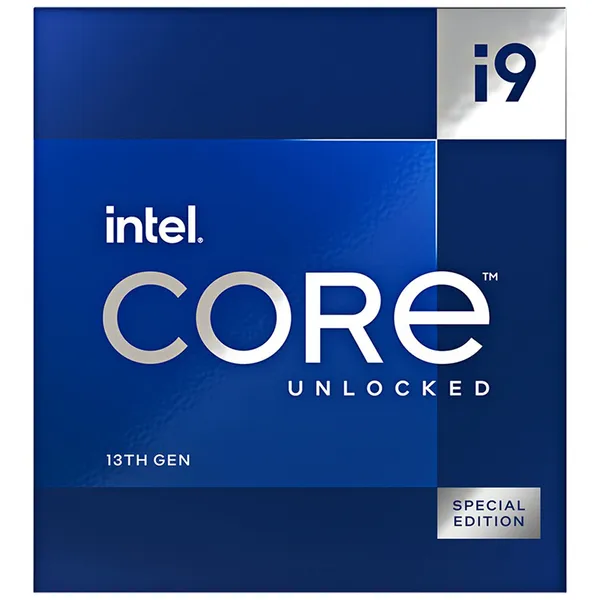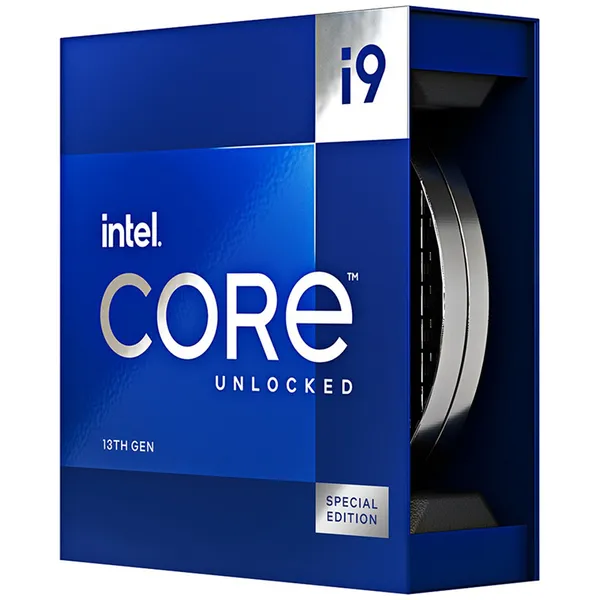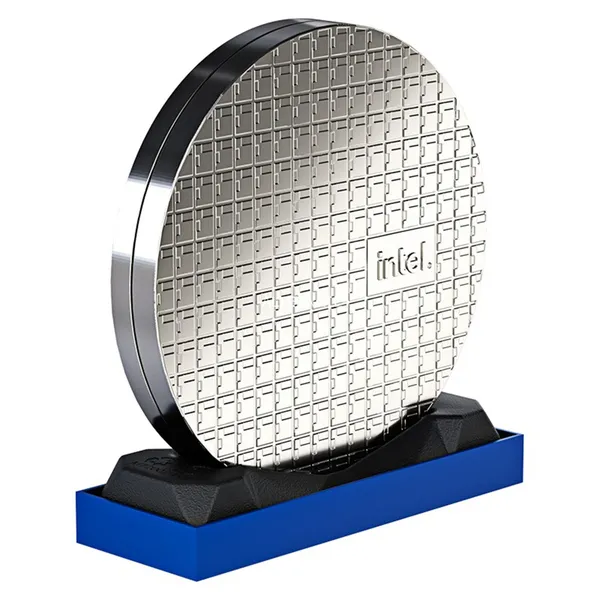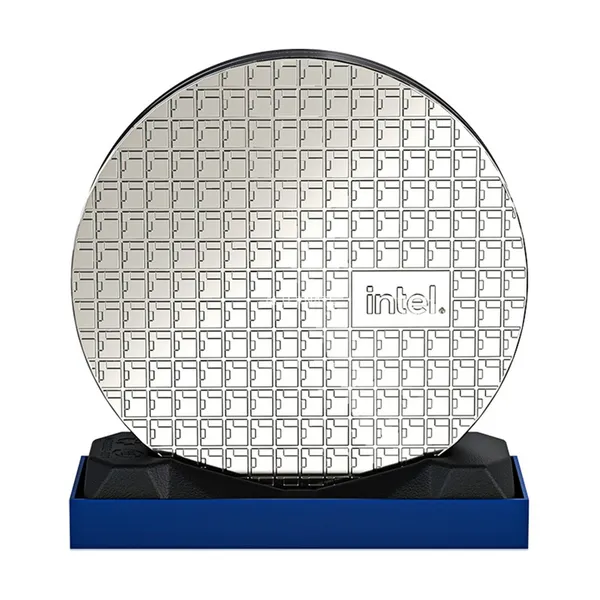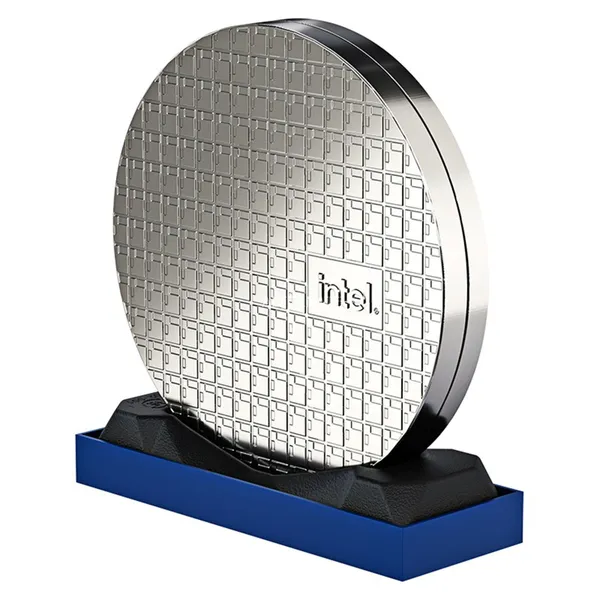Intel Core i9-13900KS 3,2GHz Raptor Lake, 36MB, LGA1700 - processor, boxed
Tillverkare: INTEL
ID: BX8071513900KS
56990€
Visa Moms 0%
Visa Moms 25,5%
Multitronic Vasa
Multitronic Jakobstad
Multitronic Jyväskylä
Multitronic Villmanstrand
Multitronic Mariehamn
Produktspecifikation
Välj en eller flera funktioner för att söka efter produkter med samma specifikationer.
Produktspecifikation
Beskrivning
På lager i butiker
Leverans
Prisutveckling
| Tekniska data | |
| OpenCL-version | 3.0 |
| Status | Launched |
| Lanseringsdatum | Q1'23 |
| Målmarknad | Gaming, Content Creation |
| Processor | |
| Processor | i9-13900KS |
| Processortillverkare | Intel |
| Processorfamilj | Intel Core i9 |
| Processorsockel | LGA 1700 |
| Stegning | B0 |
| Förpackningstyp | Låda |
| Processorkärnor | 24 |
| Processortrådar | 32 |
| Processorns driftlägen | 64-bit |
| Processorboostfrekvens | 6 GHz |
| Processorns cache | 36 MB |
| Busstyp | DMI4 |
| Processorns kodnamn | Raptor Lake |
| Processorns cachetyp | Smart Cache |
| Minnesbandbredd som stöds av processorn (max) | 89,6 GB/s |
| ARK-ID för processor | 232167 |
| Kylning inkluderat |  |
| Effektiva kärnor | 16 |
| Prestandakärnor | 8 |
| Maximalt antal DMI-lanes | 8 |
| Processorns baseffekt | 150 W |
| Maximal turboeffekt | 253 W |
| Basfrekvens för effektiv kärna | 2.4 GHz |
| Boostfrekvens för effektiv kärna | 4,3 GHz |
| Basfrekvens för prestandakärna | 3,2 GHz |
| Boostfrekvens för prestandakärna | 5,4 GHz |
| Processorgenerering | 13th Gen Intel® Core |
| Minne | |
| ECC |  |
| Icke ECC |  |
| Minnesbandbredd (max) | 89,6 GB/s |
| Minneskanaler | Dubbla kanaler |
| Högsta internminne som stöds av processorn | 192 GB |
| Minnestyper som stöds av processorn | DDR4-SDRAM, DDR5-SDRAM |
| Miljökrav | |
| T-junction | 100 ° C |
| Övriga egenskaper | |
| Maximalt internminne | 192 GB |
| L2-cache | 32768 KB |
| Grafikutgång | eDP 1.4b, DP 1.4a, HDMI 2.1 |
| Grafiken | |
| Ombord grafikkort modell | Intel UHD Graphics 770 |
| Diskret grafikkortsmodell | Ej tillgänglig |
| Ombord grafikkort |  |
| Basfrekvens för inbyggt grafikkort | 300 MHz |
| Högsta dynamiska frekvens för inbyggt grafikkort | 1650 MHz |
| Antal utgångar som stöds av inbyggt grafikkort | Embedded DisplayPort (eDP) 1.4b, DisplayPort 1.4a, HDMI 2.1 |
| Högsta upplösning för inbyggt grafikkort (DisplayPort) | 7680 x 4320 pixlar |
| Antal exekveringsenheter | 32 |
| Grafik enhets-ID | 0xA780 |
| Högsta upplösning för inbyggt grafikkort (eDP – Integrated Flat Panel) | 5120 x 3200 pixlar |
| Uppdateringsfrekvens vid högsta upplösning för inbyggt grafikkort (eDP – Integrated Flat Panel) | 120 hz |
| Uppdateringsfrekvens vid högsta upplösning för inbyggt grafikkort (DisplayPort) | 60 hz |
| Uppdateringsfrekvens vid högsta upplösning för inbyggt grafikkort (HDMI) | 60 hz |
| Antal skärmar som stöds (inbyggt grafikkort) | 4 |
| Högsta upplösning för inbyggt grafikkort (HDMI) | 4096 x 2160 pixlar |
| DirectX-version på inbyggt grafikkort | 12.0 |
| OpenGL-version på inbyggt grafikkort | 4.5 |
| Diskret grafikkort |  |
| MFC-motorer (Multi-Format Codec) | 2 |
| Processor specialfunktioner | |
| Intel® Hyper Threading Technology (Intel® HT Technology) |  |
| Intel® Turbo Boost Technology | 2.0 |
| Intel® Quick Sync Video Technology |  |
| Intel® Clear Video HD Technology (Intel® CVT HD) |  |
| Intel® AES nya instruktioner (Intel® AES-NI) |  |
| Förstärkt Intel Speedstep Technology |  |
| Intel® Trusted Execution Technology |  |
| Intel® Active Management Technology (Intel® AMT) |  |
| Intel® VT-x med utökad Sida Tabeller (EPT) |  |
| Intel® Secure Key |  |
| Intel® 64 |  |
| Intel® Stable Image Platform Program (SIPP) |  |
| Intel® OS Guard |  |
| Intel® Virtualization Technology for Directed I/O (VT-d) |  |
| Intel Virtualization Technology (VT-x) |  |
| Intel® Turbo Boost Max Technology 3.0 |  |
| Intel® Speed Shift-teknik |  |
| Intel® Boot Guard |  |
| Intel® Thermal Velocity Boost |  |
| Intel® vPro ™ plattformsberättigande |  |
| Mode-based Execute Control (MBE) |  |
| Intel® Deep Learning Boost (Intel® DL Boost) on CPU |  |
| Intel® Volymhanteringsenhet (VMD) |  |
| Intel® CET (Control-flow Enforcement Technology) |  |
| Intel® Thermal Velocity Boost, frekvens | 6 GHz |
| Intel® Turbo Boost Max Technology 3.0-frekvens | 5,8 GHz |
| Intel® Thread Director |  |
| Intel® GNA 3.0 (Intel® Gaussian & Neural Accelerator) |  |
| Intel® Adaptive Boost-teknik |  |
| Intel vPro® Enterprise Platform Eligibility |  |
| Intel® Threat Detection Technology (TDT) |  |
| Intel® Standard Manageability (ISM) |  |
| Intel® One-Click Recovery |  |
| Intel® Hardware Shield Eligibility |  |
| Intel® TME (Total Memory Encryption) – Multinyckel |  |
| Intel® Virtualization-teknik med skydd mot omdirigering (VT-rp) |  |
| Intel vPro® Essentials Platform Eligibility |  |
| Intel® Stable IT Platform Program (SIPP) |  |
| Intel® Remote Platform Erase (RPE) |  |
| Egenskaper | |
| Stödda instruktionsset | SSE4.1, SSE4.2, AVX 2.0 |
| PCI Express-kortplatser version | 5.0, 4.0 |
| Execute Disable Bit-säkerhet |  |
| Idle stater |  |
| Termiska övervakningsteknik |  |
| Skalbarhet | 1S |
| CPU konfiguration (max) | 1 |
| Inbäddade alternativ |  |
| PCI Express konfigurationer | 1x16+1x4, 2x8+1x4 |
| Högsta antal PCI Express-platser | 20 |
| Marknadssegment | Skrivbord |
| ECCN (Export Control Classification Number) | 5A992C |
| CCATS (Commodity Classification Automated Tracking System) | 740.17B1 |
| Användningsförhållanden | PC/Client/Tablet |
| DMI-revision (Direct Media Interface) | 4.0 |
| Logistikdata | |
| Harmonized System (HS)-kod | 8542310001 |
| EAN | 5032037262071 |
| Garanti | 1 år |
Intel® Gaussian & Neural Accelerator
Intel® Gaussian & Neural Accelerator (GNA) is an ultra-low power accelerator block designed to run audio and speed-centric AI workloads. Intel® GNA is designed to run audio based neural networks at ultra-low power, while simultaneously relieving the CPU of this workload.
Intel® Deep Learning Boost (Intel® DL Boost)
A new set of embedded processor technologies designed to accelerate AI deep learning use cases. It extends Intel AVX-512 with a new Vector Neural Network Instruction (VNNI) that significantly increases deep learning inference performance over previous generations.
Intel® Speed Shift Technology
Intel® Speed Shift Technology uses hardware-controlled P-states to deliver dramatically quicker responsiveness with single-threaded, transient (short duration) workloads, such as web browsing, by allowing the processor to more quickly select its best operating frequency and voltage for optimal performance and power efficiency.
Intel® Thermal Velocity Boost
Intel® Thermal Velocity Boost (Intel® TVB) is a feature that opportunistically and automatically increases clock frequency above single-core and multi-core Intel® Turbo Boost Technology frequencies based on how much the processor is operating below its maximum temperature and whether turbo power budget is available. The frequency gain and duration is dependent on the workload, capabilities of the processor and the processor cooling solution.
Intel® Turbo Boost Max Technology 3.0
Intel® Turbo Boost Max Technology 3.0 identifies the best performing core(s) on a processor and provides increased performance on those cores through increasing frequency as needed by taking advantage of power and thermal headroom.
Intel® Turbo Boost Technology
Intel® Turbo Boost Technology dynamically increases the processor's frequency as needed by taking advantage of thermal and power headroom to give you a burst of speed when you need it, and increased energy efficiency when you don’t.
Intel® Hyper-Threading Technology
Intel® Hyper-Threading Technology (Intel® HT Technology) delivers two processing threads per physical core. Highly threaded applications can get more work done in parallel, completing tasks sooner.
Idle States
Idle States (C-states) are used to save power when the processor is idle. C0 is the operational state, meaning that the CPU is doing useful work. C1 is the first idle state, C2 the second, and so on, where more power saving actions are taken for numerically higher C-states.
Enhanced Intel SpeedStep® Technology
Enhanced Intel SpeedStep® Technology is an advanced means of enabling high performance while meeting the power-conservation needs of mobile systems. Conventional Intel SpeedStep® Technology switches both voltage and frequency in tandem between high and low levels in response to processor load. Enhanced Intel SpeedStep® Technology builds upon that architecture using design strategies such as Separation between Voltage and Frequency Changes, and Clock Partitioning and Recovery.
Thermal Monitoring Technologies
Thermal Monitoring Technologies protect the processor package and the system from thermal failure through several thermal management features. An on-die Digital Thermal Sensor (DTS) detects the core's temperature, and the thermal management features reduce package power consumption and thereby temperature when required in order to remain within normal operating limits.
Intel® Volume Management Device (VMD)
Intel® Volume Management Device (VMD) provides a common, robust method of hot plug and LED management for NVMe-based solid state drives.
Intel® Gaussian & Neural Accelerator (GNA) is an ultra-low power accelerator block designed to run audio and speed-centric AI workloads. Intel® GNA is designed to run audio based neural networks at ultra-low power, while simultaneously relieving the CPU of this workload.
Intel® Deep Learning Boost (Intel® DL Boost)
A new set of embedded processor technologies designed to accelerate AI deep learning use cases. It extends Intel AVX-512 with a new Vector Neural Network Instruction (VNNI) that significantly increases deep learning inference performance over previous generations.
Intel® Speed Shift Technology
Intel® Speed Shift Technology uses hardware-controlled P-states to deliver dramatically quicker responsiveness with single-threaded, transient (short duration) workloads, such as web browsing, by allowing the processor to more quickly select its best operating frequency and voltage for optimal performance and power efficiency.
Intel® Thermal Velocity Boost
Intel® Thermal Velocity Boost (Intel® TVB) is a feature that opportunistically and automatically increases clock frequency above single-core and multi-core Intel® Turbo Boost Technology frequencies based on how much the processor is operating below its maximum temperature and whether turbo power budget is available. The frequency gain and duration is dependent on the workload, capabilities of the processor and the processor cooling solution.
Intel® Turbo Boost Max Technology 3.0
Intel® Turbo Boost Max Technology 3.0 identifies the best performing core(s) on a processor and provides increased performance on those cores through increasing frequency as needed by taking advantage of power and thermal headroom.
Intel® Turbo Boost Technology
Intel® Turbo Boost Technology dynamically increases the processor's frequency as needed by taking advantage of thermal and power headroom to give you a burst of speed when you need it, and increased energy efficiency when you don’t.
Intel® Hyper-Threading Technology
Intel® Hyper-Threading Technology (Intel® HT Technology) delivers two processing threads per physical core. Highly threaded applications can get more work done in parallel, completing tasks sooner.
Idle States
Idle States (C-states) are used to save power when the processor is idle. C0 is the operational state, meaning that the CPU is doing useful work. C1 is the first idle state, C2 the second, and so on, where more power saving actions are taken for numerically higher C-states.
Enhanced Intel SpeedStep® Technology
Enhanced Intel SpeedStep® Technology is an advanced means of enabling high performance while meeting the power-conservation needs of mobile systems. Conventional Intel SpeedStep® Technology switches both voltage and frequency in tandem between high and low levels in response to processor load. Enhanced Intel SpeedStep® Technology builds upon that architecture using design strategies such as Separation between Voltage and Frequency Changes, and Clock Partitioning and Recovery.
Thermal Monitoring Technologies
Thermal Monitoring Technologies protect the processor package and the system from thermal failure through several thermal management features. An on-die Digital Thermal Sensor (DTS) detects the core's temperature, and the thermal management features reduce package power consumption and thereby temperature when required in order to remain within normal operating limits.
Intel® Volume Management Device (VMD)
Intel® Volume Management Device (VMD) provides a common, robust method of hot plug and LED management for NVMe-based solid state drives.
Multitronic Vasa: 0 st
Beräknad leverans: 02.01 - 06.01
Beräknad leverans: 02.01 - 06.01
Idag: Stängt (Juldagen)
Multitronic Jakobstad: 0 st
Beräknad leverans: 02.01 - 06.01
Beräknad leverans: 02.01 - 06.01
Idag: Stängt (Juldagen)
Multitronic Jyväskylä: 0 st
Beräknad leverans: 02.01 - 06.01
Beräknad leverans: 02.01 - 06.01
Idag: Stängt (Juldagen)
Multitronic Villmanstrand: 0 st
Beräknad leverans: 02.01 - 06.01
Beräknad leverans: 02.01 - 06.01
Idag: Stängt
Multitronic Mariehamn: 0 st
Beräknad leverans: 02.01 - 06.01
Beräknad leverans: 02.01 - 06.01
Idag: Stängt (Juldagen)
Avhämtning från butiken
Beräknad leveranstid: 02.01 - 06.01
Beräknad leveranstid: 02.01 - 06.01
Matkahuolto: Paketautomater och serviceställen
Beräknad leveranstid: 03.01 - 06.01
Beräknad leveranstid: 03.01 - 06.01
Posti: Paketautomater och serviceställen
Beräknad leveranstid: 02.01 - 05.01
Beräknad leveranstid: 02.01 - 05.01
Posti: Postpaket
Beräknad leveranstid: 03.01 - 06.01
Beräknad leveranstid: 03.01 - 06.01
Posti: Till dörren-paket
Beräknad leveranstid: 03.01 - 05.01
Beräknad leveranstid: 03.01 - 05.01
Matkahuolto: Företagspaket
Beräknad leveranstid: 02.01 - 06.01
Beräknad leveranstid: 02.01 - 06.01
Matkahuolto: Hempaket
Beräknad leveranstid: 02.01 - 06.01
Beräknad leveranstid: 02.01 - 06.01
Posti: Hempaket
Beräknad leveranstid: 03.01 - 05.01
Beräknad leveranstid: 03.01 - 05.01
De tekniska uppgifterna ovan är endast avsedda som referens och kan ändras. Vi förbehåller oss rätten att korrigera tryckfel och att använda illustrationer som vägledning. Viss text kan vara autogenererad eller maskinöversatt, vilket kan leda till felaktigheter.


